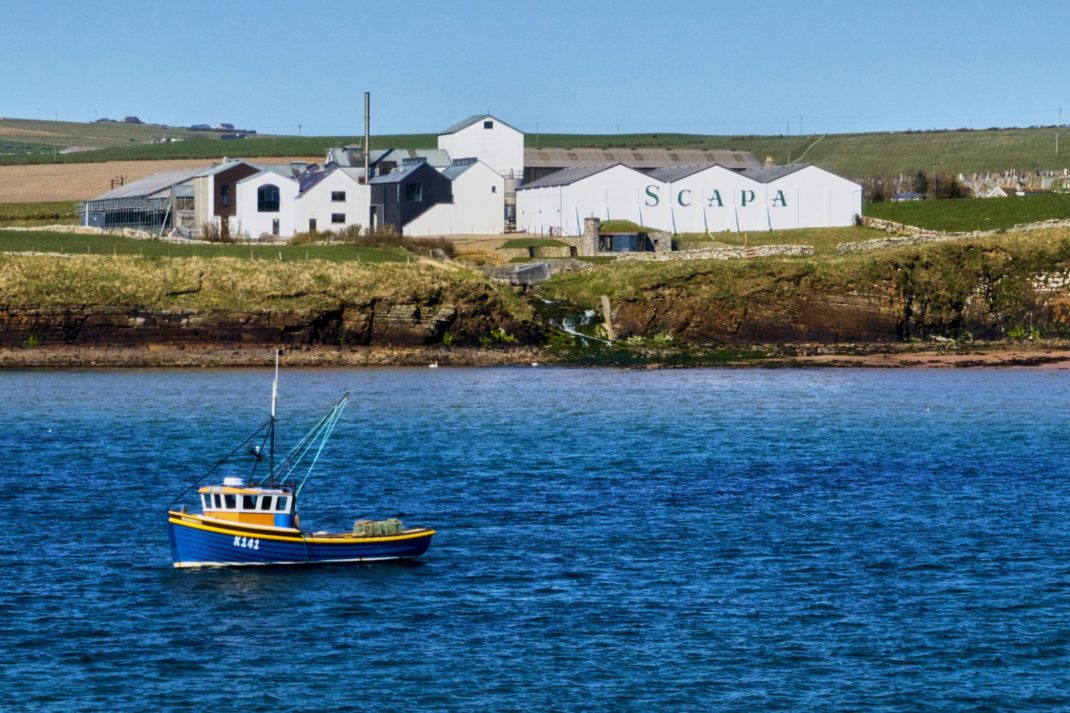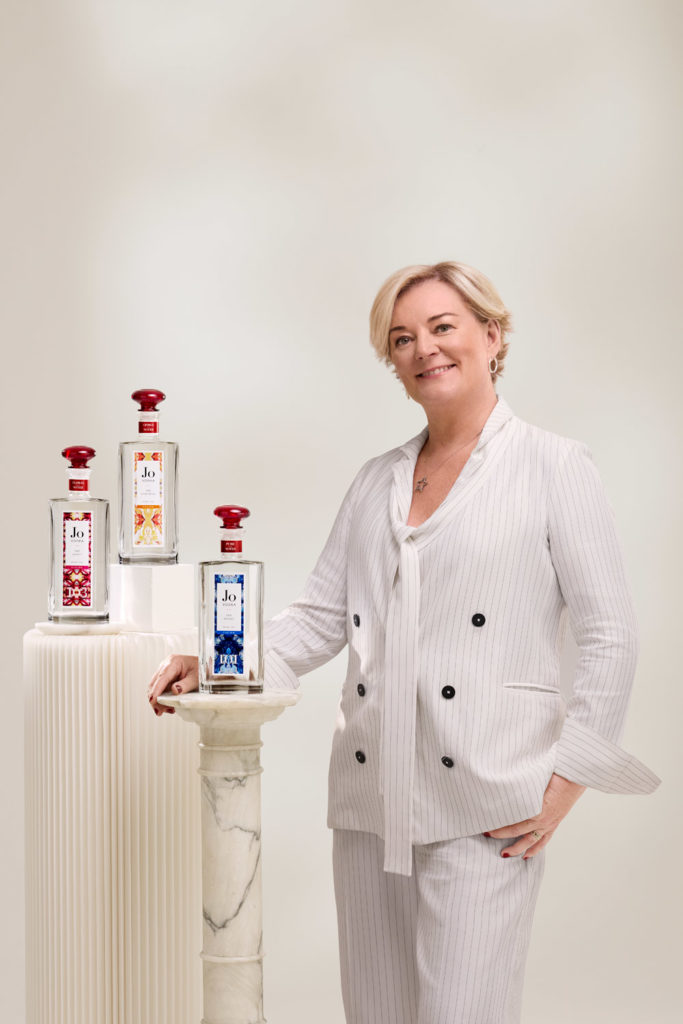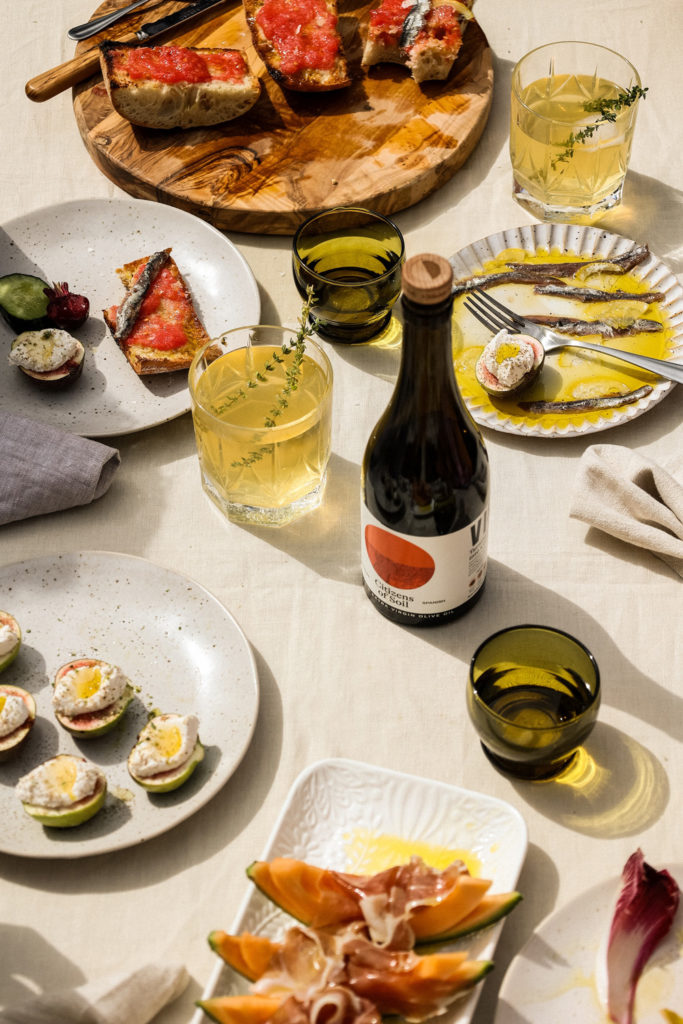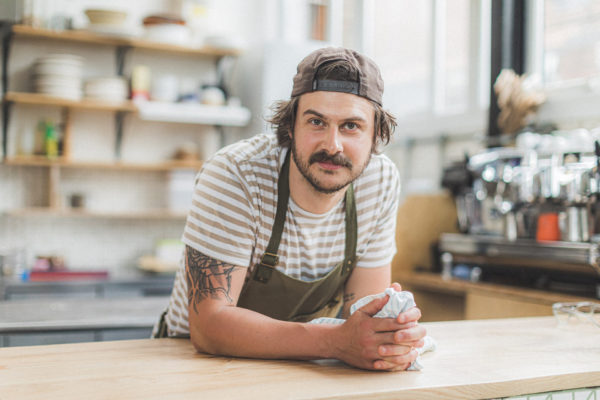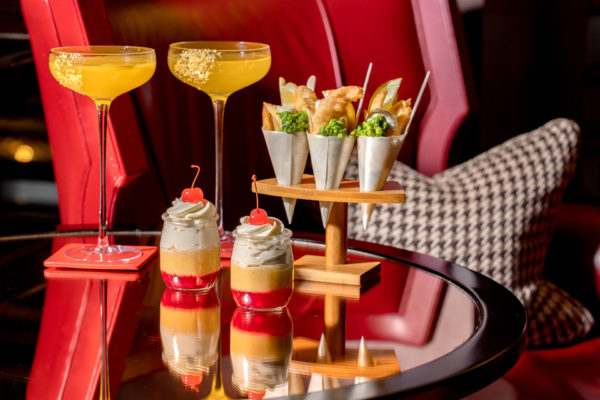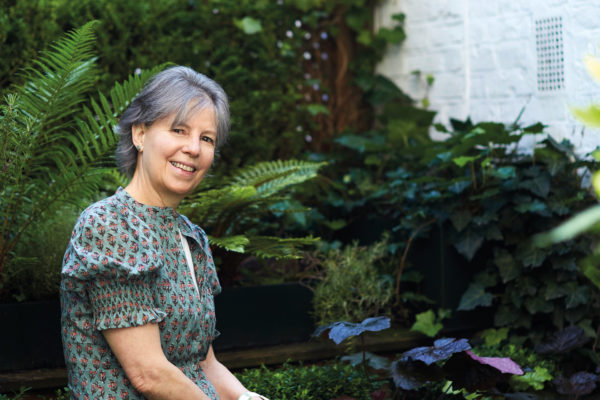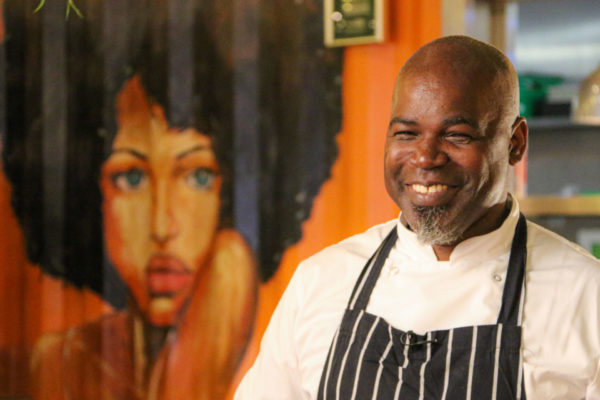Reimagining Fine Dining: Inside The Water House Project
By
2 years ago
Olivia Emily chats to Gabriel Waterhouse about his Bethnal Green restaurant, The Water House Project
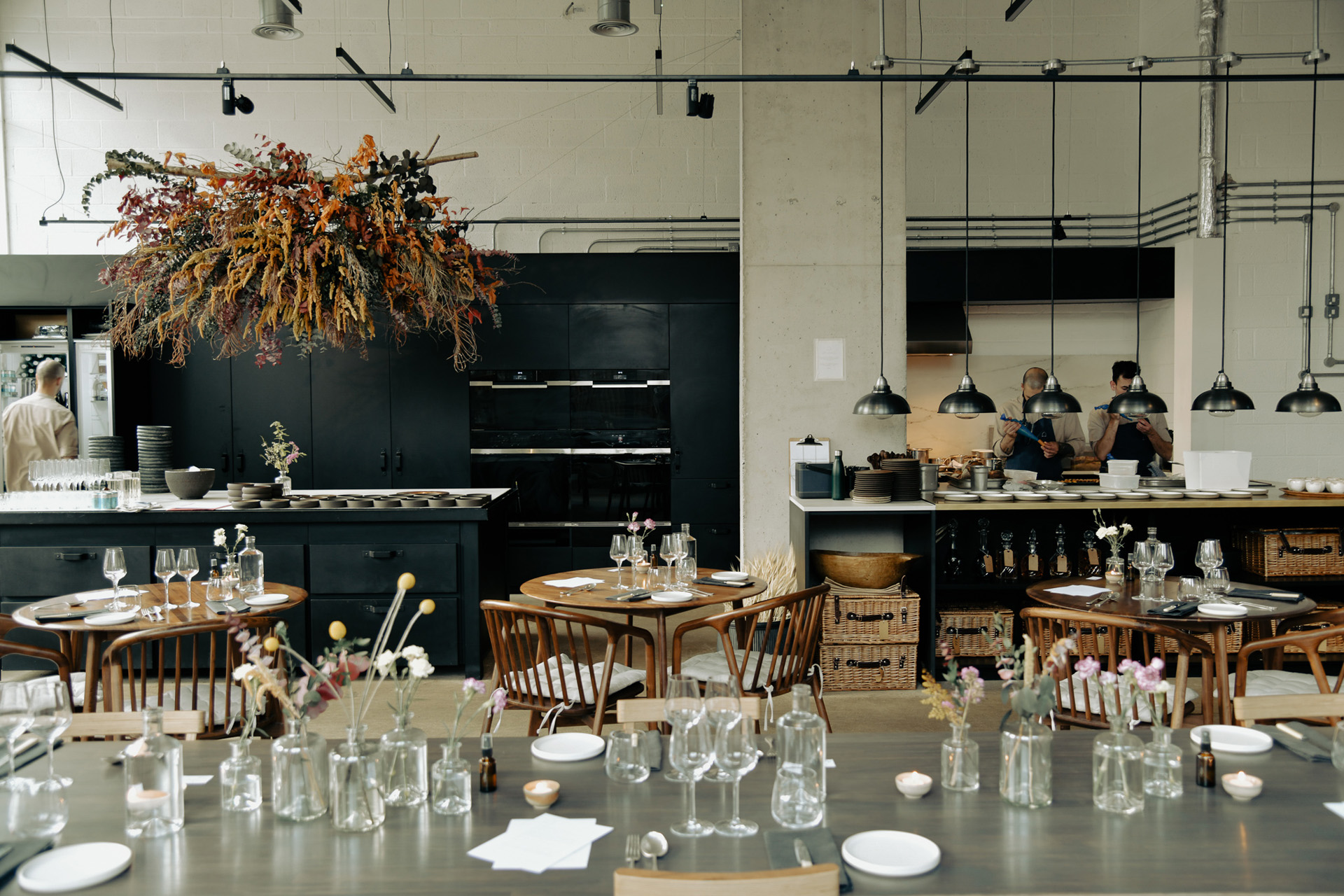
Situated just off Regent’s Canal in the heart of Hackney, The Water House Project is an indulgent, experimental restaurant challenging our perception of ‘fine dining’. Olivia Emily tastes the goods and chats to founder, Gabriel Waterhouse, about how he turned his at-home supper club into a fledgling sustainable restaurant.
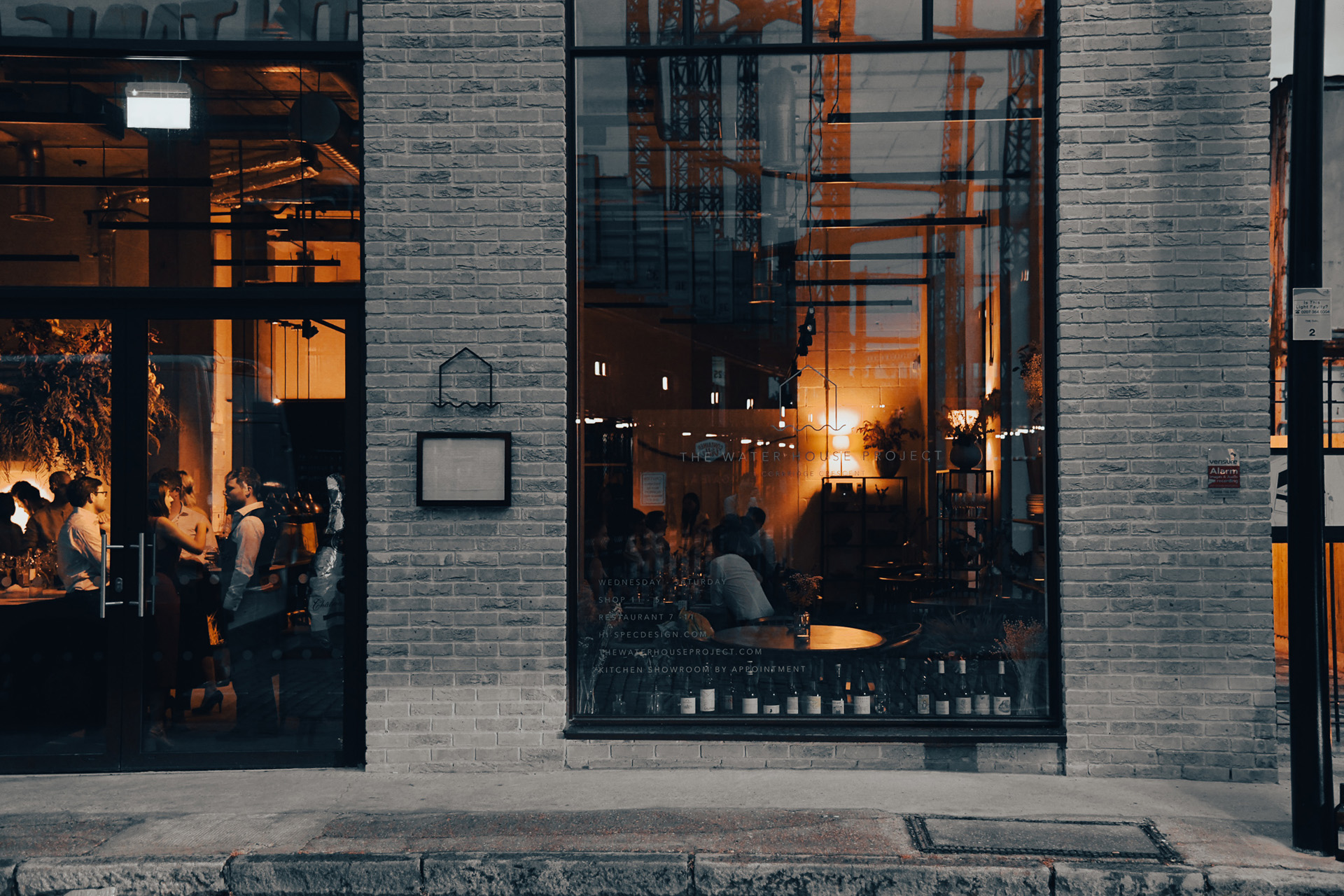
(c) Gabriel Waterhouse
The Water House Project
From his house in Hackney, to a spot on Mare Street, to an airy new venue just off Regent’s Canal, Gabriel Waterhouse’s eponymous restaurant, The Water House Project, has grown from a burgeoning dream into a fully-fledged restaurant reality. Its supper club origins remain: though the waitstaff withdraw from the open-plan kitchen in admirable synchronicity – reflecting a precise, practised routine – you could easily be sat in someone’s (very nice) dining room.
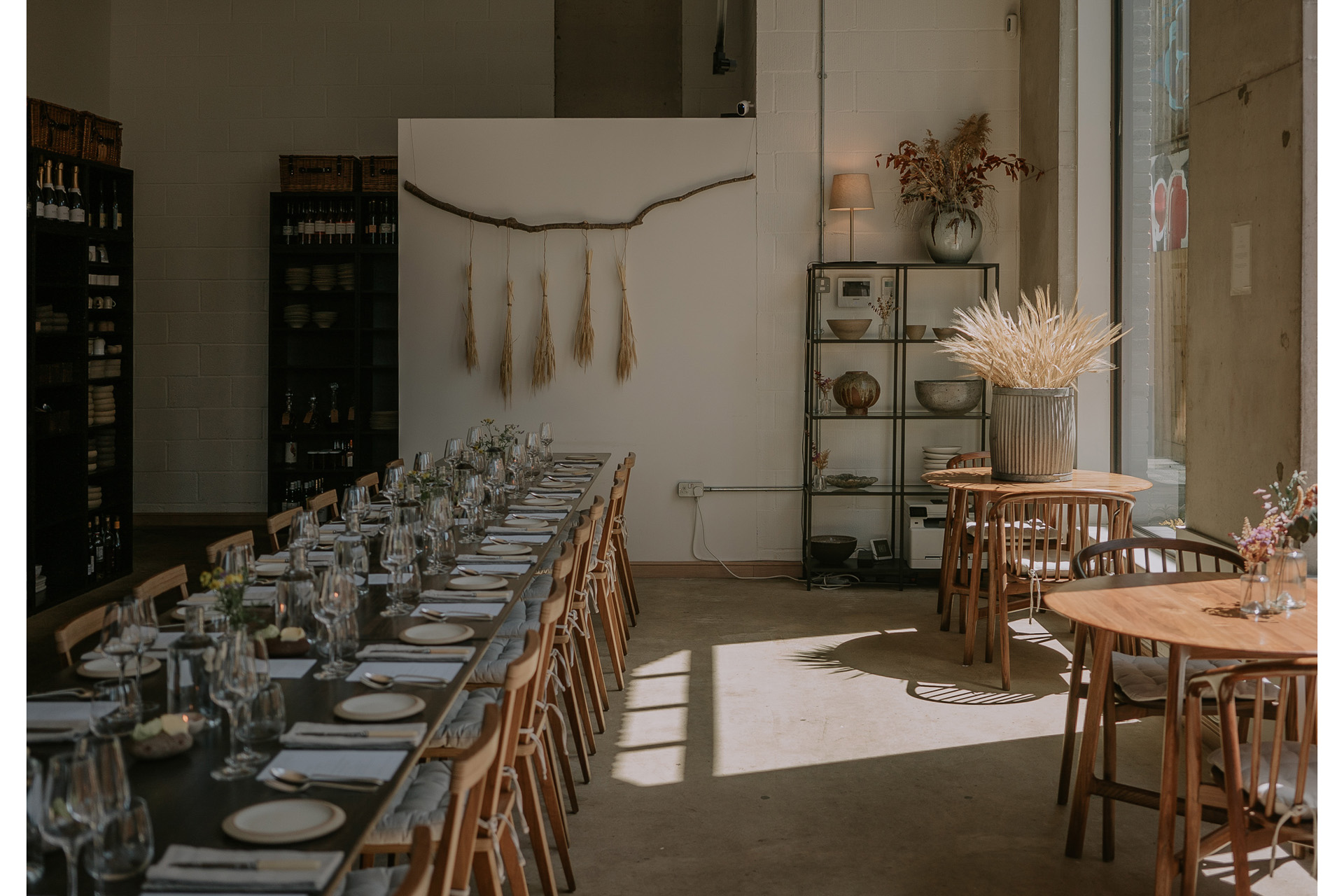
(c) Gabriel Waterhouse
The kitchen is sleek and open, the focal point of the room. Lofty ceilings and walls of windows beg to be experienced in the summer. Dried seasonal plants decorate the room, hanging like chandeliers suspended from the ceiling. The simple tables – choose one of the larger communal tables to share your experience, or dine more intimately – all face the cooking space; watch unabashedly as dishes are precisely prepared and plates are laid up. The sommeliers vibrate with knowledge, pouring low-intervention wines from across Europe, buzzing with tidbits of information and excited to know which pairing is your favourite.
Gabriel, who honed his craft at Galvin la Chapelle, leads the kitchen, accompanied by sous chef Thomas Lemercier (formerly of Hide). The nine-course tasting menu changes entirely with every season; expect, at all times, a vegetable led experience, with pickling and fermenting and earthy flavours gleaned from fresh, high quality produce.
Interview With Gabriel Waterhouse
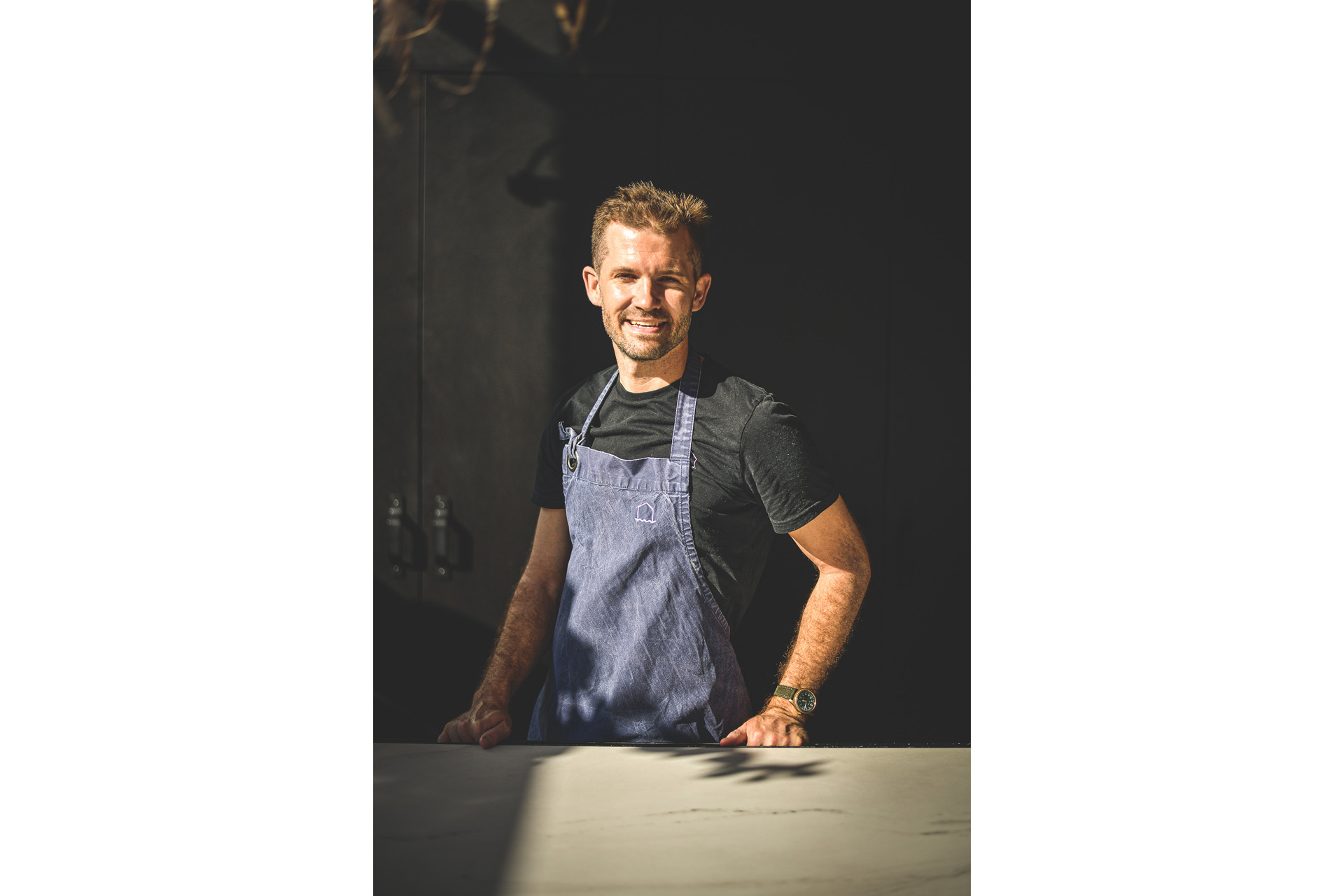
(c) Patricia Wakaimba
Can you tell us a bit about yourself and your culinary journey?
My Northumberland upbringing has definitely influenced my culinary journey and much of the food and environment that I create today at The Water House Project. When I finished school, I spent a lot of time at home while cooking at a local French restaurant. I always found myself inspired by the wild landscapes; they had a real sense of elegance. When I moved to London and cooked at Galvin La Chapelle, The Water House Project started to conceptualise, and was born out of my flat in Bethnal Green.
The Water House Project started as a supper club, right? How did you go about starting that?
My wife Trish and I hosted the supper club out of my flat in Bethnal Green, where I would host two nights a week. I eventually found myself in a position where I was working pretty much all the time and I could take the supper club full-time. From there, it was like a snowball effect. We began moving from one place to the next and saving money in each venue to open The Water House Project each time in a bigger way.
Your latest Bethnal Green venue is beautiful. Can you tell us a bit about this space?
The interiors are inspired in part by the nordic regions, but also the landscapes in Northumberland. I use a lot of raw materials. My upbringing has definitely given me a respect for simplicity and an appreciation for a space that can be both beautiful and functional. I like to keep clutter to a minimum – everything is used for a definitive purpose. I think that objects are more beautiful when they are used rather than just sitting there. The space at The Water House House Project is functional and easy to maintain; the focus is on the food and the experience.
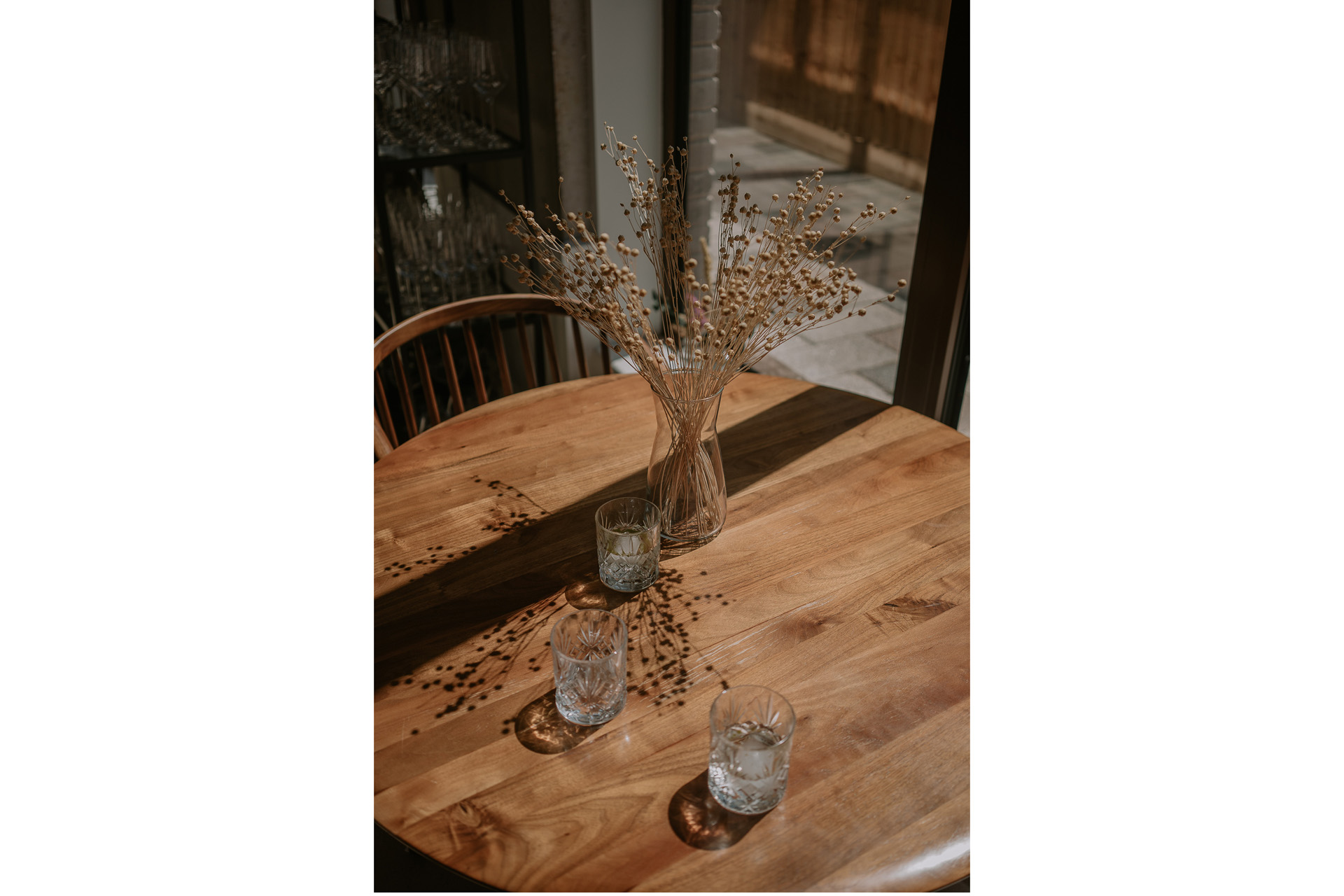
(c) Gabriel Waterhouse
How does it feel to have your own space after working for other people, starting in a flat…?
It feels good to have our own space, especially one that’s slightly more detached than the closeness of it being in your own home. The Water House Project still feels very personal, but a little further removed than it was before. We now have a space that is dedicated to doing what we do: a space to develop, think and create. I think of it as a studio of sorts. It’s a beautiful space to spend time in, especially in the daytime when the light shines through. When the guests aren’t here, I use it as a base to create – I built The Water House Project with that in mind.
Looking at The Water House Project in the form that it’s in now feels like the third stage of its evolution. With each step, the space feels more special and closer to our idea of what we want the restaurant to be. It’s always growing and evolving; it never feels like a finished article. That being said, the space works perfectly for what we need: it nurtures creativity and goes beyond being just a restaurant.
The space is completely open, with no clear boundary between kitchen and dining space. Why did you decide to design the space in this way?
I guess it derives from my experience in other kitchens, and feeling a separation and disconnect between the guests and the people working in the restaurant. Although it will never be a completely balanced and open space, architecture definitely influences the way that we behave. When I was studying philosophy, I remember learning about the psychology centred around architectural space and how this influences people’s behaviour. At The Water House Project, our space generates a way of working and interacting that gives more balance between us as a team and the people that visit us.
Can you tell us a bit more about your approach to ethical and sustainable fine dining?
We are very selective when sourcing ingredients. We want to know exactly what we’re putting on a plate, knowing that it has come from a sustainably reared producer. We source our fish as locally as possible, from fishermen with whom we’ve built relationships over the years. We also power the building with renewable energy sources. We approach our menus in a way that means we produce as little waste as possible, and this extends to our non-alcoholic drinks pairing, which usually includes ingredients that would otherwise be discarded. Our wines are also made and sourced ethically, from small-scale producers that champion organic wines made with low-intervention methods.
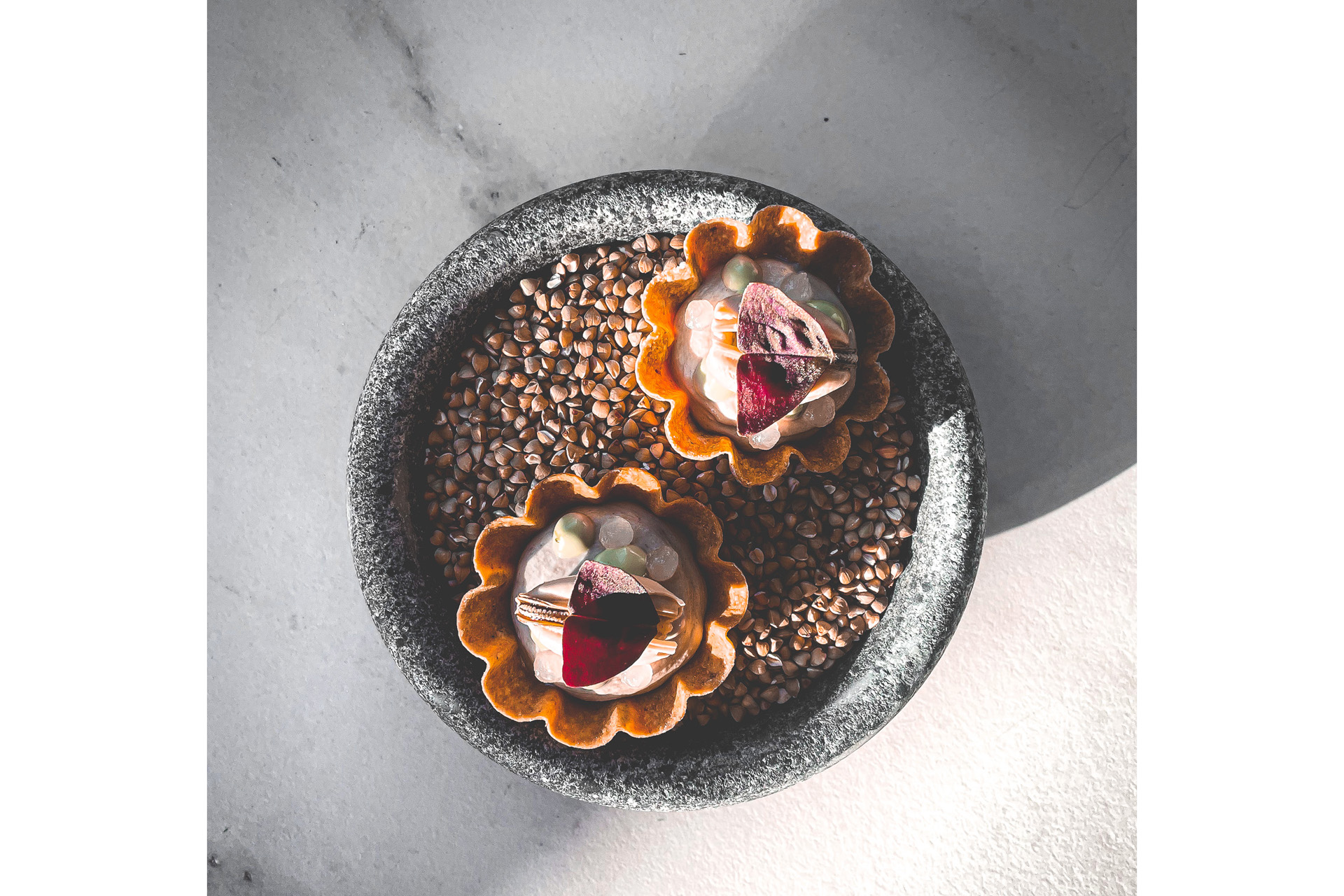
What’s your top piece of sustainable cooking advice?
There isn’t a ‘one size fits all’ approach to sustainable cooking, but getting in the creative mindset is a good place to start. When you’re cooking, consider ways that you could use the offcuts of ingredients. At The Water House Project, we want all of our guests to feel as though they’ve been really considered, so we put a lot of care into our non-alcoholic menu. A lot of our infusions (which change throughout the seasons), use off-cuts of ingredients to create delicious soft drinks.
What’s your favourite dish to serve? Ever, and at the moment?
The menu changes every season (evolving throughout), so it’s difficult to pinpoint one definitive favourite – one dish is never exactly the same. We reform ideas in our new menus when the season is about to change, and I look forward to using specific ingredients. At the moment, I enjoy using artichokes; they feature in three different dishes on the menu, both in sweet and savoury dishes. It’s a very versatile ingredient.
Which dish do you wish you could serve more (without seasonal constraints)?
In the same way I look forward to new seasons and the ingredients that they bring, I get tired of ingredients as the season comes to an end. It’s nice to revisit them every time they come around rather than working with one specific ingredient constantly. I think it’s important to have space between cooking with and tasting an ingredient so you can see it with fresh eyes.
What’s the menu planning process like?
It starts about six weeks to two months before we change, but the intensity of the preparation usually ramps up about two weeks before! We want our ideas to form fluidly and organically, but some dishes require a lot of work and research. I think it’s important to visualise a complete dish before making it. I can get stuck on specific ingredients and find it hard to move on. As a team, each individual makes a huge contribution by bringing ideas and influences. By working collectively, we can share genuine feedback that allows us to make adjustments before we start on a menu. Before each season, we sit down as a team and go through ideas, ingredients and techniques that we’re interested in exploring – this gives us a nice starting point. By practising as much as possible and bringing things together, you can create one beautiful element and consider how you can incorporate it into a bigger dish as a whole.
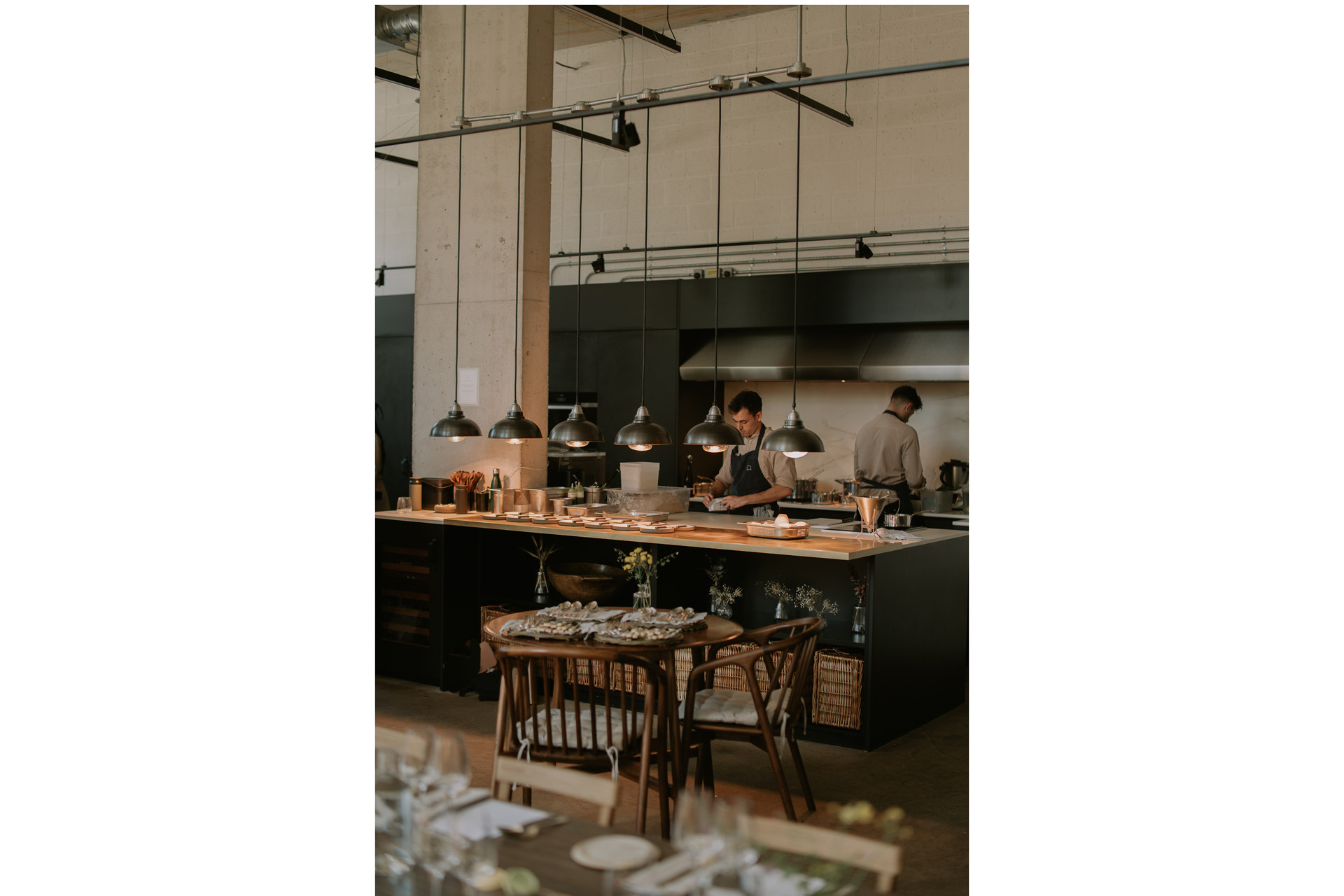
(c) Gabriel Waterhouse
What is your favourite wine that you serve at The Water House Project?
There are wines that we love to use and wineries that we revisit from season to season. Our pairings are chosen based on how well they complement the specific dish. We might love a wine, but we won’t use it if it doesn’t pair perfectly. We have built close relationships with suppliers that share a similar ethos to our own. We frequently work with my friend Willian (a Czech supplier), Newcomer wines and The Modest Merchant who all have beautiful selections.
You often pair with cider, too. Can you tell us a bit about that?
On the winter menu, we’ve paired one of our courses, brassicas with guanciale and Baron Bigot, with Kingston Black Wilding cider from The Fine Cider Company. Felix, the founder, sources artisanal cider from the UK exclusively. Cider is reasonably straightforward to make year upon year, but these small-scale producers are doing it particularly well. The Kingston Black is special as it’s made from only five trees. We’ve also bought The Fine Cider Company’s whole supply, so it’s a one off.
What’s your favourite pairing right now?
I have a couple of favourites that are on the menu now. The Kingston Black cider with the brassicas complement each other very naturally. We’ve paired one of our sweeter courses – Chocolate and Armagnac, barley ice cream, hen of the woods, cep and walnut – with a fortified red wine called Maury Grenat from South East France. The wine is similar to Port in style, which classically pairs well with chocolate. It’s an intense and luxurious combination.
What’s your ultimate goal and vision for The Water House Project?
A continued, natural evolution. When we feel ready, we will continue to progress, but it’s about the moment and how we improve within that time. We grow at our own pace. It will always be closely connected to what we have created, which is underpinned by an intimate atmosphere that you can only create with just a few people – that will always be the case.
If you couldn’t have a restaurant in London, where would you go instead?
I think Northumberland as it’s my home county, or potentially Kenya as I feel connected to it through my wife Trish. So I’d say both locations for sentimental reasons. Both locations share a wildness which is such a contrast to London – it’s a different way of life.
What is your favourite food memory?
I was on a bike ride with my family, and a hare had been clipped by a car. The initial idea was to bury it… It so happened to be Good Friday, just before Easter. My dad’s a biology teacher, so he decided to dissect it. We then cooked it and made jugged hare – which was my Grandpa’s favourite – and we all shared it on the Sunday. It’s definitely my strongest food memory as I remember feeling a real connection to the food. When you’re young, your senses are so much more heightened; I remember the smell being so pungent and gamey.
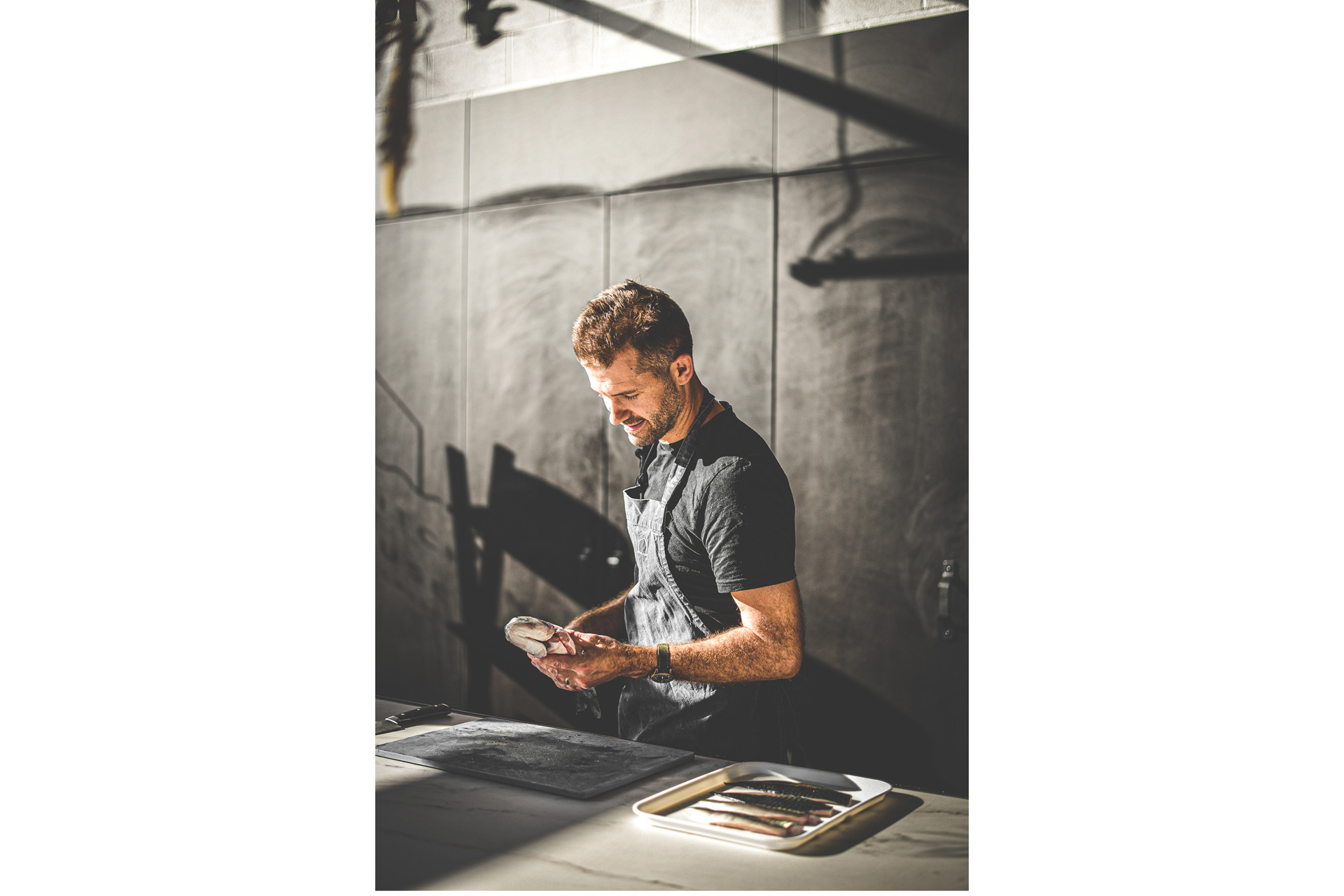
(c) Patricia Wakaimba
Quick Fire
My favourite ingredient to cook with is… Broadly fish.
My favourite meal to eat is… A dish that Trish makes: palak paneer. I love the smells, the spices… It feels very comforting.
My favourite restaurant in London is… Paradise. It ticks so many boxes. It’s somewhere you can visit intimately, but also feels quintessentially London.
My favourite restaurant in the world is… Not sure! I haven’t been to many places worldwide. I feel like in the London community, people talk about restaurants like they are collecting them. I haven’t been to San Sebastian, I have been to Copenhagen once… I don’t feel like I’m part of that scene. Whenever I go anywhere, it’s Kenya or Northumberland; restaurants are less of a priority there, but there is much about both locations that inspires me.
The chef I’m most inspired by is… Simon Rogan. I think that he’s very ahead of his time, aesthetically and flavour wise.

